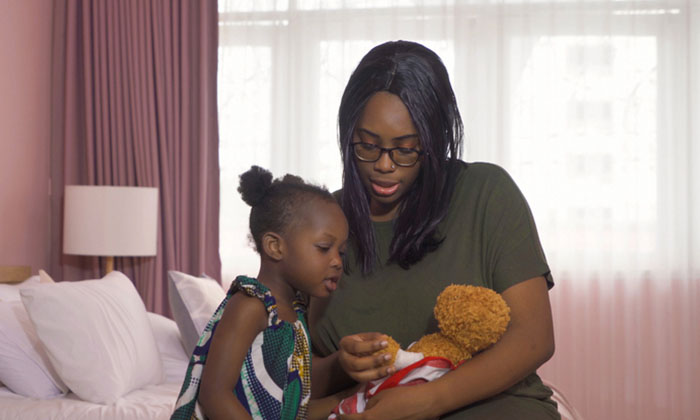“Come play with me,” your child invites. Here is an opening to educate while sharing in what she loves best. For this age group, play is an exquisite way of learning about the world. I’ve found that a specific type of play–called projective play–can be valuable for both child and parent.
The basis of the tool is projection, a process whereby we literally “throw” our feelings, thoughts, and associations onto a nonhuman receiver. I often use pets as my projective tool. But stuffed animals, puppets, dolls, and picture books work just as well.
Projective play is worth trying for three reasons: 1) Play, in any form, is just plain fun; 2) This kind of play lets you in on your child’s inner concerns. Often young children can’t label or explain what’s on their minds. They are adept, however, at assigning emotions to a pet, a stuffed animal, or some other object of devotion; 3) Finally, as parents, we have an opportunity to explore and resolve what’s bothering a child.
Projective Play to Understand Adoption
Parents find projection useful in helping children understand adoption. For children, adopting a pet can be a way of re-enacting how they themselves joined their family. When we get a new pet, we talk about how the pet has no home and how we will make the pet part of our family. Once after we’d adopted a kitten, I heard my daughter, Katherine, speaking in loving tones, “It’s okay. Your family couldn’t take care of you. But they loved you, honey. And now you have us.” Katherine came closer to understanding her own adoption that day.
Some parents worry that their child will equate adopting a pet with adopting a child and that this is a harmful message to send. In my experience, this does not happen. Most children adore animals, and adopted children are almost always delighted to incorporate a pet in the same way they were included in their families. Children are usually secure enough in their parents’ love to know that, bottom line, there are two kinds of family members–people ones and animal ones.
Families can re-enact adoption using other substitutes. Many children “adopt” their dolls or stuffed animals. A big stuffed animal can “adopt” a smaller one. One mother I know often played “adoption” with her four-year-old son. The big triceratops mother adopted a brontosaurus child, who then hopped onto the triceratops mother’s back for a long and happy ride!
How Does Your Dolly feel?
Here are some other scenarios in which projection can elicit feelings and help solve problems:
Unconditional love. A misbehaving pet provides a powerful lesson when the parent reassures the child that no matter how naughty Fido may be, the family loves him, nonetheless.
Sibling rivalry. A parent can chat with a child about “how the stuffed animals (or dolls or goldfish, etc.) are getting along.” “Happy Duck is mad because Sad Duck gets all the attention,” my daughter, Elizabeth, told me once. This triggered a long talk about parents loving children equally and so on.
Family changes. (moving, new children, death, etc.) Inexpensive dollhouses–better yet, homemade ones out of shoe boxes or fruit crates–are great for playing out current family changes. One parent I know helped her daughter talk about the loss of her beloved grandfather through a parallel loss in the dollhouse family.
“Come play with me,” your pre-schooler pleads. Play projectively next time and see how it works for you.



